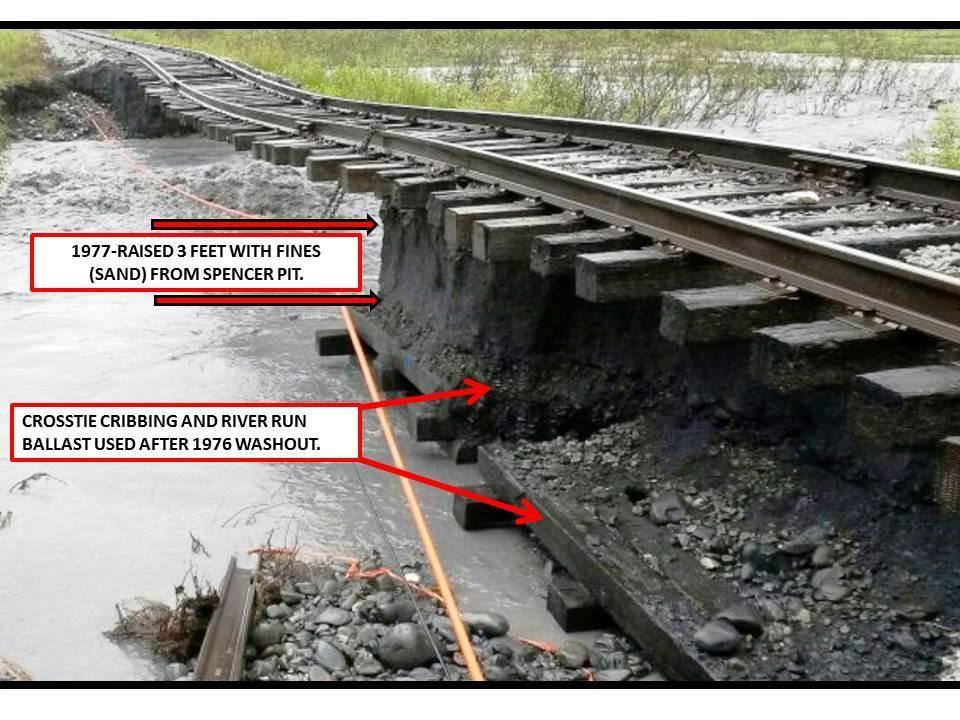
by Rick Leggett
Since you're so interested in the ARR history, here's a little background on the recent Skookum Creek washout. The reason I remember all this is not because I have this fantastic memory, it's because I had just been promoted to assistant foreman on Extra Gang #2 and I took a couple of weeks leave in the middle of the project. The two weeks (early August 1977) was so I could get married and honeymoon in Hawaii. LOL
Anyway, we were assigned to raise this portion of the track for about 3/4 mile to try and stop the same thing from happening again (first one was 76 or spring of 77). Only thing was, we did it the old fashioned way and literally used track shovels to put the material under the ties.We were hauling fines out of Spencer Pit and I was supervising the dumping because I had been on the work train the previous summer for a couple of months.
We started by using a power jack that quickly proved to be almost impossible. We were raising the track as high as we could on each pass and the foot on the power jack would just sink into the fines. Even using blocking and cut ties under the foot didn't work so well, because it took a lot of work to then dig out the blocking to go to the next spot.
My boss Charley Stoll was a good guy, but was famous for being allergic to any equipment. If left up to him, we would have done it all with track jacks. So yours truly called the General Roadmaster (Paul Watts) and asked that a locomotive crane be sent down with a short spreader bar. Charley let me try my idea and what I did was use the crane and spreader bar to pick the track right out of the fines dumped to the the top of the rail and about 16 of us would jump in and start tamping off the ties.
As you know, one of the theories on the term "Gandy Dancer" came from a company that manufactured track shovels. The other is about how guys tamping look like a "gandy" bird (whatever the heck that is..lol) hopping around on one foot. Watching 8 guys on each side just stuffing what is almost sand under the ties with track shovels...pretty much corroborated both of those theories.
Anyway, I believe we were there about two months raising the track what we were told was 3 feet. The photo below makes me think that's close, because I'm sure the track settled substantially in the intervening 37 years and it looks like it's about 2- 2 1/2 feet now. The reason it took so long was because we were lucky to get a lift over 3 inches to stay by the time it settled and then we had to of course get good cross-level for the once or twice a week train (no passenger trains then).

© 2014 Rick Leggett